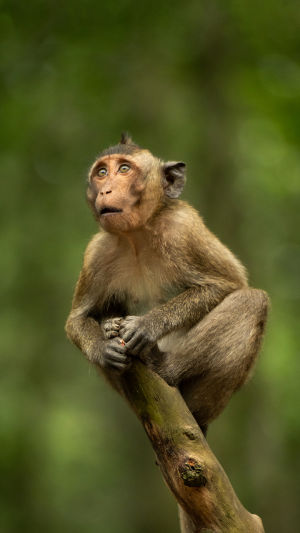Primates are one of the most intelligent species on our planet, and even humans themselves originated from this group. However, the sheer number of species, combined with the "heterozygosity" between races, makes it difficult for people to recognize the various primate species when they see them. Many people are even confused about the difference between orangutans, gorillas, and chimpanzees.
Therefore, here is a brief introduction to the classification of primates, to help some people to know more interesting creatures, and also to call for people to participate in the conservation of these species.
There are 18 species in the genus Diana, which is the largest group in the monkey family, such as Diana long-tailed monkeys, green long-tailed monkeys, white-fronted long-tailed monkeys, Drax long-tailed monkeys, and white-rumped long-tailed monkeys. They are diurnal. They have cheek pouches to store food, low dental cusps, are relatively mixed feeders, and usually have equal-length limbs. Males are usually brighter in colour than females.
They are distributed in Africa and inhabit forests. Some species are the most common monkeys in Africa, and most animals in the genus Long-tailed Monkey have been threatened with survival or are even endangered.
The Long-tailed monkeys are a group of Old World monkeys. The muzzle is prominent, both jaws are stout, there are 32 teeth, the nostrils face forward and downward immediately, and the hands and feet have five fingers and toes with flattened nails, all of which can stand erect. They have cheek pouches that can store food, have low tooth tips, are relatively mixed feeders, and usually have limbs that are equal in length.
Different species of long-tailed monkeys have very different faces, and these facial features are diverse. This rich variety of facial features has evolved to avoid interspecific hybridization within the same genus.
They live at the top of the forest canopy and are social animals, in family groups of 5-50 monkeys, as well as small groups of single males. They use calls and visual cues to communicate with each other, and vocal communication includes common vocalizations and alarms for contact. The arboreal group dominates its position according to social rank in the family group.
Lemurs are the most primitive primate species in existence and are found only in the forests of Madagascar and the Comoros Islands. With their gentle temperament and quirky expressions, they are the biggest stars among primates. Although its body shape, hands, and feet structure like a monkey, its mouth and face, but like a lemur and dog.
When the lemur jumps from the tree to the ground to find another tree to perch on, it can see the difference between it and the monkey: they will first flex their bodies in the process of movement, and then jump continuously.
Capuchin monkeys are named for their tail length, which is the same as their body length, with the end of the tail curled into a circle. Their body hair is mostly black, white, or yellowish-white around the face, pink on the face and shoulder area and white on the throat. There is a V-shaped area at the top of the head. They are docile and usually like to live in trees, often going out at night to hunt insects, snails, and other small invertebrates, and also eating some plant foods.





